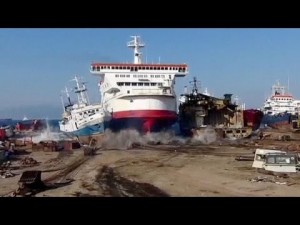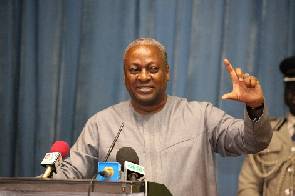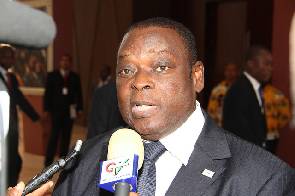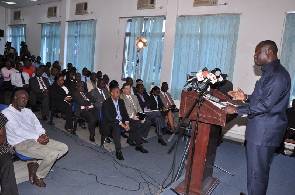 Engineers operating the two ferries at Senchi and Akrade in the Eastern Region have hinted that an additional landing site would be constructed at Akrade to serve as a step-down for the ferries.
Engineers operating the two ferries at Senchi and Akrade in the Eastern Region have hinted that an additional landing site would be constructed at Akrade to serve as a step-down for the ferries.
The two-metre step-down will help the ferries to land safely whenever the water levels in the Volta Lake go down or reduce.
The Project Manager of the Senchi Ferries, Mr Benjamin Adjei Keelson, made this known when he briefed the board of directors of the Ghana Highway Authority (GHA) who paid a working visit to the site last Thursday, to evaluate the status of the ferries.
However, he did not indicate when the project would begin.
Currently, the ferries have three landing sites, two at the Senchi side and one at the Akrade end of the lake.
GHA, earlier this year, launched the ferries at Akrade and Senchi to carry vehicles and passengers across the Volta Lake, following the closure of the Adomi Bridge for rehabilitation.
“Whenever the water level in the lake reduces, it slows down the operation of the ferries, causing discomfort to commuters,” Mr Keelson said.
The Board Chairman, Mr Bashiru B.L.T Sakibu, lauded the idea and encouraged the contractor to begin work as soon as possible.
From Akrade and Senchi, the team also visited Atimpoku to inspect work on the Adomi Bridge.
Adomi Bridge rehabilitation
The 59-year-old Adomi Bridge was closed to motorists on March 10, 2014, to pave way for the rehabilitation work expected to be completed in October 2015.
The project is being funded with a concessionary loan of 12.9 million euros from the Bank of Austria.
Rehabilitation works involve the replacement of the entire deck on the bridge, the hangers, as well as the ropes that support it.
Lack of maintenance on the 335m bridge, which was built in 1955, and opened to traffic in 1956, led to the collapse of one of the steel beams supporting it. Two others also developed serious cracks later on, resulting in a depression on a section of the bridge.
Because the two beams had been disabled, the remaining supporting beams took on the additional load of 880 tonnes of steel; a situation experts feared could lead to the facility’s collapse.
It was accordingly closed to traffic but less than nine months after repair works had been completed on some of the steel beams, the bridge developed new cracks.
Progress of work
Briefing the media during a tour of the site, the Project Manager, Dr Paul Herrmann, said the project was 57 per cent complete and added that “barring any difficulties, the entire project will be completed on schedule.”
So far, he said, 13 out of the 23 decks had been installed on the bridge.
Dr Herrmann added that an inspection trolley would also be installed under the bridge for officials of the GHA to carry out inspections and maintenance works when necessary.
“After the completion of the replacement of the steel deck and the hangers, the corrosion protection of the new deck and the arch, as well as the casting of the new walkways and the installation of handrails, the asphalt layer will be applied on the steel deck plate,” he added.
Mr Sakibu, for his part, said he was happy with the level of work done so far by the engineers and project managers.



